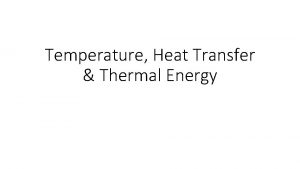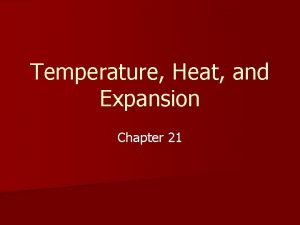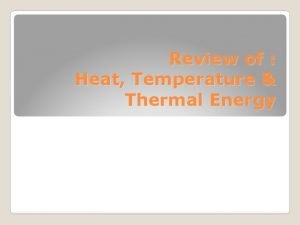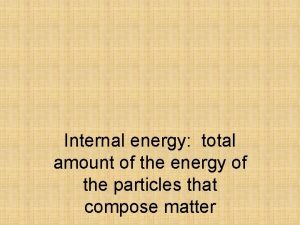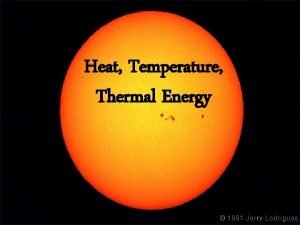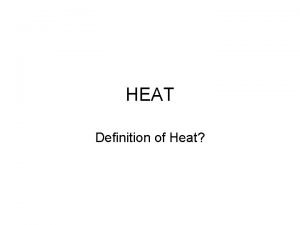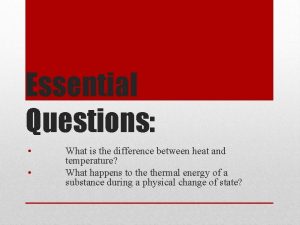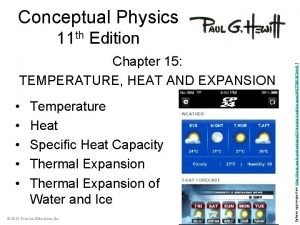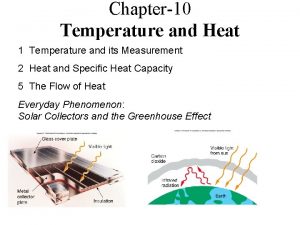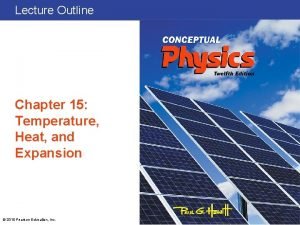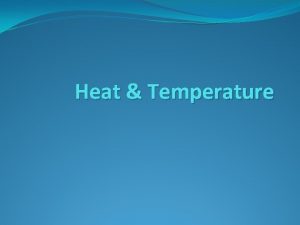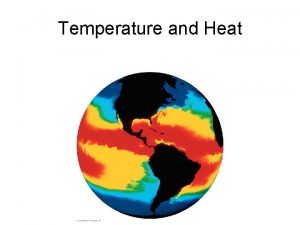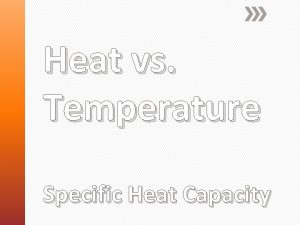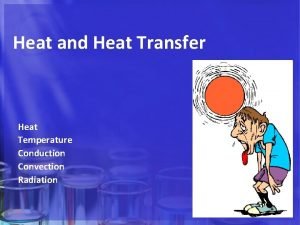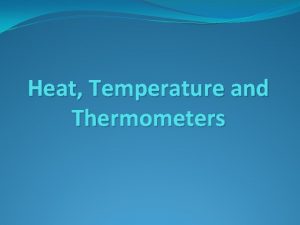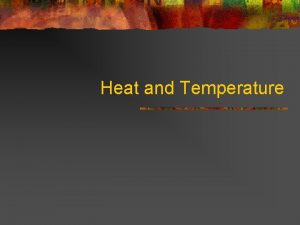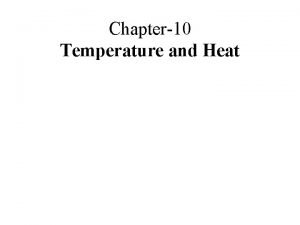Temperature and Heat Temperature Temperature is defined as












- Slides: 12

Temperature and Heat

Temperature § Temperature is defined as an intensive physical property that measures the average kinetic energy of the particles in a sample of matter (like a glass of water). § Intensive properties DO NOT depend upon the amount of matter present.

Heat § Heat is defined as an extensive physical property because it is the sum total of the kinetic energy of the sample of matter. It depends on the size of the sample. § Heat always flows from the hottest area to the coldest area! § Give an example:

Temperature Scales § Celsius (AKA Centigrade) § Kelvin (also called the absolute temperature scale). § The size of the degree interval is the same for Celsius and Kelvin. § How to change from one scale to the other: K = o. C + 273 o. C = K - 273

Example § What is the boiling point of water (at sea level) in degrees Celsius? § Change this to Kelvin. § Change 473 K to Celsius.

Units of Heat § § The SI unit of heat is the Joule (J) or kilojoule (k. J). The English unit of heat is the calorie. 1 cal = 4. 184 J 1 kcal is the same as the Calorie (which equals 1000 calories). This is the unit used in dietetics for food energy. For example, a Big Mac has about a million Calories (well, maybe not quite that many…) § Note the difference between capital C and lower case c in the word Calorie or calorie!

Instruments to Measure Temperature and Heat § Temperature is measured with a thermometer. § Heat energy changes are measured experimentally in a device called a calorimeter. § To change the temperature of a substance, heat must be added or removed. Some substances require very little heat to cause a change in temperature.

Specific Heat Capacity § Every substance has a physical property known as specific heat capacity (abbreviated C or Cp) § It is defined as the amount of heat needed to change the temperature of one gram of a substance by one degree Celsius. § Specific heat capacity for water = 4. 184 J / g x o. C or 1. 00 cal / g x o. C

§ Specific heat capacity is looked up in a table, or given in the problem (unless you are trying to figure it out!) § You are expected to memorize the value for water. § When working with a calorimeter, we assume that the device does NOT absorb any heat and that it doesn’t lose heat to the surroundings. § This is not completely true (but to make things easier in our calculations, we will pretend it is true).

Conservation of Energy § The law of conservation of energy means that in an insulated system, any heat lost by one system must be gained by another system. § For example, a hot piece of metal is placed in a bucket of cold water. The “sizzle” sound is the heat transfer from metal to water. What happens to the temperature of the water?

Formula § How to calculate heat (lost or gained) q = m x ∆T x C Heat (energy) = mass x change in temperature x specific heat capacity This formula can be rearranged to find m, or ∆T or C Problems can involve one system or two systems (like the hot metal put in the cold bucket of water)

§ Heat lost = heat gained m x ∆T x C = m x ∆T x C
 Set is a collection of well defined objects
Set is a collection of well defined objects Formula specific latent heat
Formula specific latent heat Heat vs thermal energy vs temperature
Heat vs thermal energy vs temperature Heat transfer types
Heat transfer types Chapter 21 temperature heat and expansion
Chapter 21 temperature heat and expansion Heat thermal energy and temperature
Heat thermal energy and temperature The difference between heat and temperature
The difference between heat and temperature Thermal energy vs heat
Thermal energy vs heat Meaning of heat energy
Meaning of heat energy The difference between heat and temperature
The difference between heat and temperature Chapter 15 temperature heat and expansion
Chapter 15 temperature heat and expansion Unit of specific heat
Unit of specific heat Chapter 21 temperature, heat and expansion answer key
Chapter 21 temperature, heat and expansion answer key



